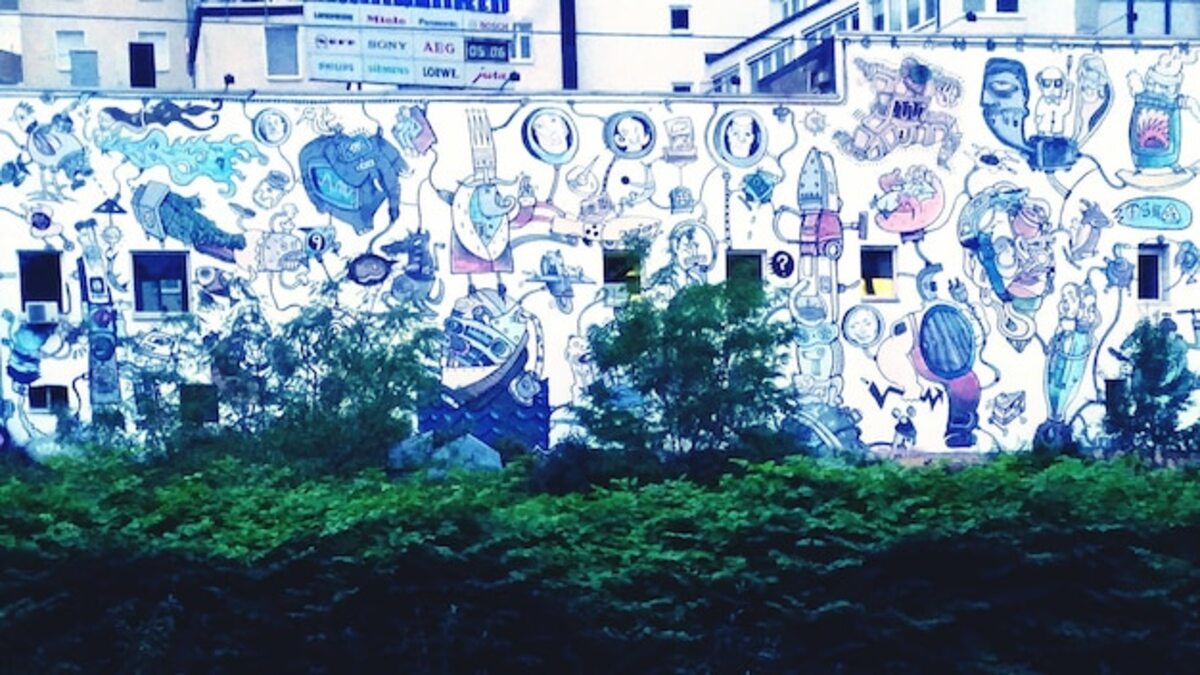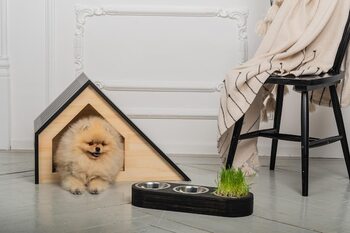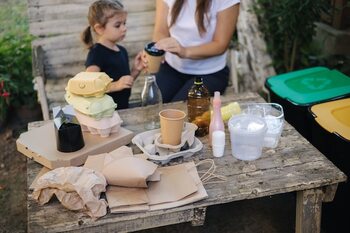Urban spaces: design that fosters personal creativity

Urban spaces: design that fosters personal creativity is an essential approach to transforming our cities into inspiring places. In a world where stress and routine often dominate, well-designed urban spaces can be catalysts for innovation and personal expression. From vibrant parks to artistically decorated cafes, we will explore how these environments encourage the creativity and well-being of their inhabitants. Let us rediscover together how urban design can positively influence our quality of life, turning every corner into an opportunity to dream and create.
The importance of nature in urban spaces
Nature in urban spaces not only adds aesthetic beauty but also plays a crucial role in the emotional and mental well-being of its inhabitants. The presence of trees, gardens, and green areas offers a respite from the daily hustle, creating havens where people can disconnect, reflect, and recharge. These natural spaces act as lungs amidst the concrete, contributing to air purification and fostering a deeper connection with the environment. By incorporating natural elements into urban design, an atmosphere is promoted that stimulates creativity by providing relaxing settings where ideas can flourish.
Additionally, the integration of nature into urban environments can serve as a catalyst for social interaction. Parks and gardens invite people to gather, foster creative dialogues, and collaborate on community projects. These interactions not only enrich the social life of citizens but also generate a sense of belonging and cohesion within the community. In this context, design that incorporates natural elements becomes a powerful ally in building more inclusive and stimulating cities, where each individual feels motivated to contribute their own creativity and innovative ideas.
2. Meeting areas: creating creative communities
Meeting areas are focal points in urban design that promote interaction and collaboration among individuals. These spaces, which can range from outdoor plazas to community rooms, are designed to facilitate spontaneous meetings and scheduled events, creating a sense of community where people feel comfortable sharing ideas and resources. By integrating features such as comfortable benches, play areas, and green zones, these places invite citizens to stop, relax, and connect with their neighbors, fostering an environment conducive to collective creativity.
Additionally, the design of these areas can incorporate artistic and inspiring elements that stimulate the imagination. Vibrant murals, interactive installations, and community gardens not only beautify the environment but also serve as platforms for individual and group artistic expression. By providing a space where everyone can contribute creatively—whether through art, music, or cultural activities—stronger bonds are created among community members. Thus, gathering areas become social laboratories where new ideas and innovative projects emerge, turning every corner into an opportunity to dream together.
3. The role of public art in daily inspiration
Public art plays a crucial role in the daily inspiration of citizens, turning the urban environment into a living gallery that stimulates creativity and dialogue. Murals, sculptures, and artistic installations not only beautify spaces but also tell stories and reflect the identity of the community. By integrating these artistic expressions into urban design, an environment conducive to reflection and emotional connection is created, which in turn can inspire passersby to explore their own creativity. The presence of public art invites people to stop, observe, and actively engage with their surroundings, transforming the everyday path into an enriching experience.
Moreover, public art acts as a social catalyst that fosters interaction among different groups of people. In spaces where works by local artists are exhibited or cultural events are organized outdoors, opportunities are created for residents to share ideas and inspirations. This exchange not only fuels collective imagination but also strengthens the sense of belonging and community. Each artistic piece can become a meeting point and a topic of discussion, encouraging people to collaborate and create together. Thus, public art not only beautifies our cities; it also serves as a driving force for personal and community innovation within the urban fabric.
4. Flexible spaces: adaptability for multiple uses
Flexible spaces are fundamental in contemporary urban design, as they allow adaptation to the diverse needs of the community. The versatility of these environments makes them ideal settings for a variety of activities, from social gatherings to cultural events or art installations. By integrating areas that can be easily transformed—such as open squares that host temporary markets or outdoor auditoriums—a sense of belonging and participation is encouraged, prompting people to interact and collaborate. This adaptability also promotes personal creativity, as each individual can find their own space to express themselves within the same environment.
Additionally, the intelligent use of urban furniture and space planning allows citizens to reimagine how they occupy their daily environment. For example, modular benches that can be rearranged to form larger or smaller groups enable users to create their own configurations according to the occasion. This approach not only maximizes the use of available space but also invites experimentation and play in everyday life. By fostering spaces where the conventional blends with the unexpected, collective ingenuity is awakened, and a rich culture of creativity and innovation is promoted in urban settings.
5. How sustainable design promotes innovation
Sustainable design not only seeks to minimize environmental impact but also acts as a driver of innovation in urban spaces. By integrating ecological elements, such as green roofs and water harvesting systems, designers are challenging traditional notions of construction and urban planning. This quest for creative solutions not only transforms the aesthetics of cities but also fosters an innovative mindset among architects, urban planners, and the community at large. Thus, each new project becomes a platform to experiment with alternative materials and techniques that can enhance both the functionality and sustainability of the urban environment.
Additionally, sustainable design fosters multidisciplinary collaborations that generate new ideas and approaches. By bringing together experts in ecology, technology, and art, spaces are created that are not only visually pleasing but also efficient and environmentally friendly. These synergies lead to the creation of interactive installations that invite citizens to actively engage with their surroundings. This type of interaction not only nurtures the personal creativity of residents but also reinforces the sense of community by encouraging local projects aimed at improving the quality of public space. Ultimately, sustainable design is a fundamental pillar for cultivating an urban ecosystem where innovation can thrive.
6. The influence of color and light on our mood
The influence of color and light on our mood is a fundamental aspect of urban space design that fosters creativity. Colors have a transformative power: warm tones, such as yellow and orange, can evoke feelings of joy and energy, while cool tones, such as blue and green, tend to generate calmness and tranquility. In urban environments, the careful selection of the color palette can transform a monotonous street into a vibrant space that invites passersby to stop, explore, and interact. Likewise, the incorporation of artistic murals or colorful installations can stimulate not only individual creativity but also a sense of community among those who inhabit and visit those places.
Light also plays a crucial role in how we perceive our environment. Natural lighting has positive effects on our emotional and mental well-being; for example, spaces illuminated by abundant sunlight tend to be more attractive and foster a sense of happiness. When designing urban areas with large windows or outdoor structures that maximize the entry of natural light, an environment conducive to creative activities is created. On the other hand, adequate artificial lighting during nighttime can encourage a cozy and stimulating atmosphere that invites people to socialize and share ideas. In conclusion, considering both color and light in urban design not only beautifies our common spaces but also acts as a driver for collective and individual creativity.
7. International examples of cities that foster creativity
Cities around the world are adopting innovative approaches to foster creativity through urban design. For example, Berlin has established itself as a creative epicenter thanks to its vibrant artistic and cultural scene. With a mix of galleries, art studios, and community spaces, the city offers its residents and visitors the opportunity to immerse themselves in an environment that celebrates individual expression. Furthermore, places like the Kreuzberg neighborhood are known for their artistic interventions in public spaces, where murals and ephemeral installations transform ordinary streets into authentic outdoor works of art.
Another notable example is Melbourne, recognized for its commitment to urban art and creativity. The city has implemented policies that support local artists and has designated specific areas for murals and creative projects. Additionally, its numerous cafes, independent bookstores, and outdoor markets create stimulating environments that invite people to share ideas and inspire each other. These initiatives not only enhance urban aesthetics but also foster a sense of community and belonging among residents, turning every corner into a conducive space for personal innovation.
8. Strategies to engage the community in urban design
To achieve an urban design that truly resonates with the needs and desires of the community, it is essential to involve citizens in the process. Strategies to encourage this participation can range from collaborative design workshops to online surveys that gather the opinions and suggestions of residents. By providing a space where local voices are heard, a sense of belonging and shared responsibility towards the urban environment is created, which can result in more functional and attractive spaces. These initiatives not only allow citizens to express their creativity but also contribute to forging a collective identity that reflects the cultural diversity of the community.
Additionally, the creation of community events such as art fairs or cleanup days can be an effective way to unite residents around urban design. By inviting local artists to intervene in public spaces or encouraging neighbors to participate in activities to beautify their neighborhood, an environment is promoted where collaboration and creativity flourish. These events not only beautify the physical space but also strengthen interpersonal relationships within the community. In this way, a positive cycle is established in which civic engagement drives continuous improvements in the urban environment, making it a true reflection of collective talent and aspirations.



